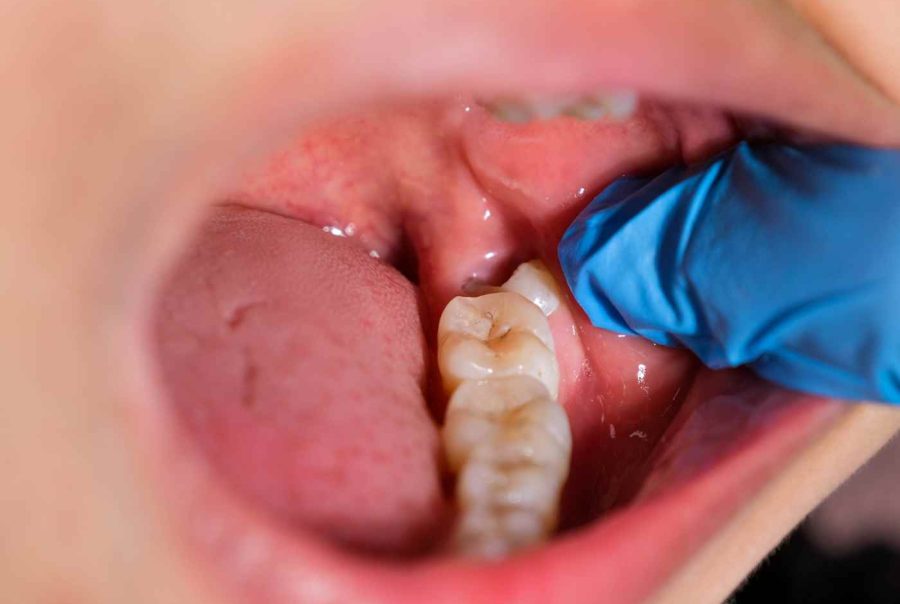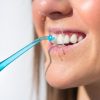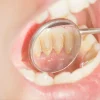Get information about Wisdom Teeth Removal treatment with the explanation of expert dentist Merve Özkan Akagündüz.
Wisdom Teeth Removal

Wisdom Teeth Removal, Doredent İstanbul
The teeth located at the very back of the upper and lower jaws, with one in each half of the jaw on both the right and left sides, are called wisdom teeth or third molars. In common parlance, they are also referred to as "wisdom teeth." In an adult, 28 teeth are typically fully developed during childhood and adolescence. As the name suggests, these wisdom teeth generally begin to emerge around the age of 20. They often cause problems due to insufficient space in the jaw.
Pain due to impaction, decay formation due to difficulties in cleaning, and abscess formation are common issues associated with wisdom teeth. Because of these problems, the removal of wisdom teeth might be necessary. There is a high likelihood of encountering situations where wisdom teeth are impacted or partially impacted, which can make their removal more challenging. Surgical procedures may be required for the removal of these teeth.
Since wisdom teeth are located at the very back of the jaw, a region that is difficult to reach and clean, even individuals with good oral hygiene can experience issues. When impacted, wisdom teeth can cause toothache, headaches, swollen lymph nodes, bad breath, and problems with neighboring teeth. Therefore, it is beneficial to visit a dentist regularly once they begin to emerge.
Should All Wisdom Teeth Be Removed?
If there is no reason for removal, wisdom teeth can be left in place. Some individuals, though rarely, can use their wisdom teeth effectively for chewing. Thus, there is no rule that every wisdom tooth must be removed. There are also cases where impacted wisdom teeth do not require removal. Wisdom teeth that are isolated by bone and do not show any cystic structure near anatomical formations can be left in the mouth and monitored periodically. Only dentists can decide this after clinical and radiological examination.
Even if they do not cause any problems in the mouth, wisdom teeth might be considered for removal to create space for tooth movement due to orthodontic reasons. If a person is considering orthodontic treatment, it is healthier to consult an orthodontist before having the wisdom teeth removed, even if they are not causing problems.
Impacted or partially impacted wisdom teeth should be removed if they cause bad breath, tooth decay, damage to neighboring teeth, or inflammation in the gum tissue. The method of removal varies depending on the type of impaction, how much of the tooth is visible in the mouth, and its angle within the bone.
How Are Wisdom Teeth Removed?
The removal method is determined by evaluating X-ray images. If the tooth has a normal eruption angle and is visible in the mouth, it can be removed similarly to other teeth. In such cases, no surgical procedure is required. The relevant area is first numbed with local anesthesia, and the tooth is removed normally.
In cases where the wisdom tooth is impacted or partially impacted, a surgical procedure is necessary. The process begins with local anesthesia. Once numbness is achieved, if there is soft tissue retention, an incision is made to expose the tooth. If there is bone retention, the obstructing bone parts are removed using a rotating instrument under water cooling. In some cases, the crown and roots of the tooth are divided into sections and removed piece by piece. After the procedure, the soft tissue is sutured. Painkillers and, if necessary, antibiotics are prescribed to the patient, who is also given a follow-up appointment for a week later. The patient is informed about the precautions to take and is sent off from the clinic.
Post-Removal Care for Wisdom Teeth
After wisdom tooth removal, food and drink should be avoided for a certain period. If a cotton tampon is placed, it should be kept in the mouth for the first half hour. Slight bleeding is normal and should not be spat out to avoid increasing the risk of infection. Taking a painkiller before the local anesthesia wears off can be beneficial to manage potential severe pain. Your doctor will provide specific instructions after the procedure.
It is advisable not to use the removal site while eating for a while. The removal void should not be probed with any instruments or fingers. Smoking should be avoided on the first day. Ice packs can be used to reduce swelling. If antibiotics are prescribed, they should be taken as directed.
Merve Özkan Akagündüz
I was born in Edirne in 1988. In 2007, I began my master’s degree in Dentistry at Istanbul University (Çapa) Faculty of Dentistry and graduated in 2012.
In 2014, I started my specialization in the Department of Orthodontics at Süleyman Demirel University Faculty of Dentistry. In 2019, I earned the title of Orthodontist and was appointed to Çorlu ADSM, where I worked as an Orthodontic Specialist Dentist from 2019 to 2022.
As of 2024, I have been continuing my practice in my own clinic.








